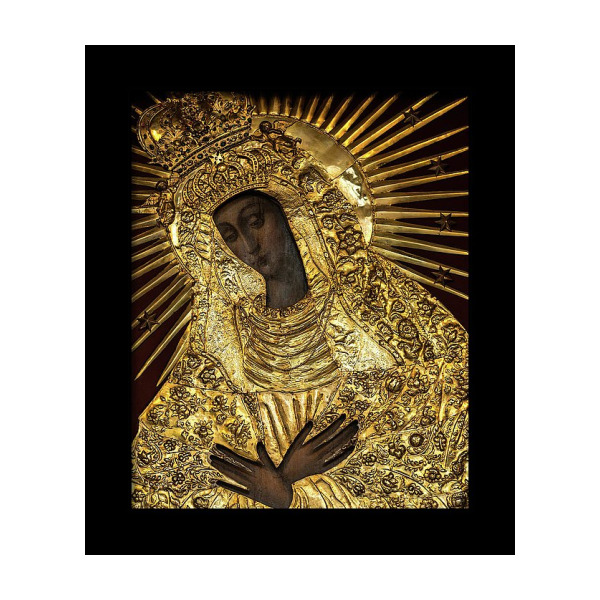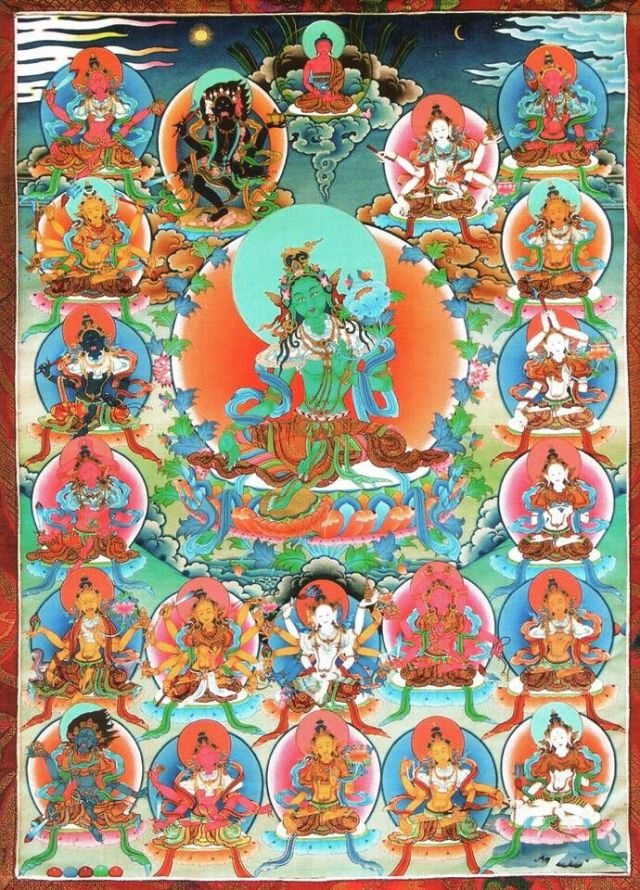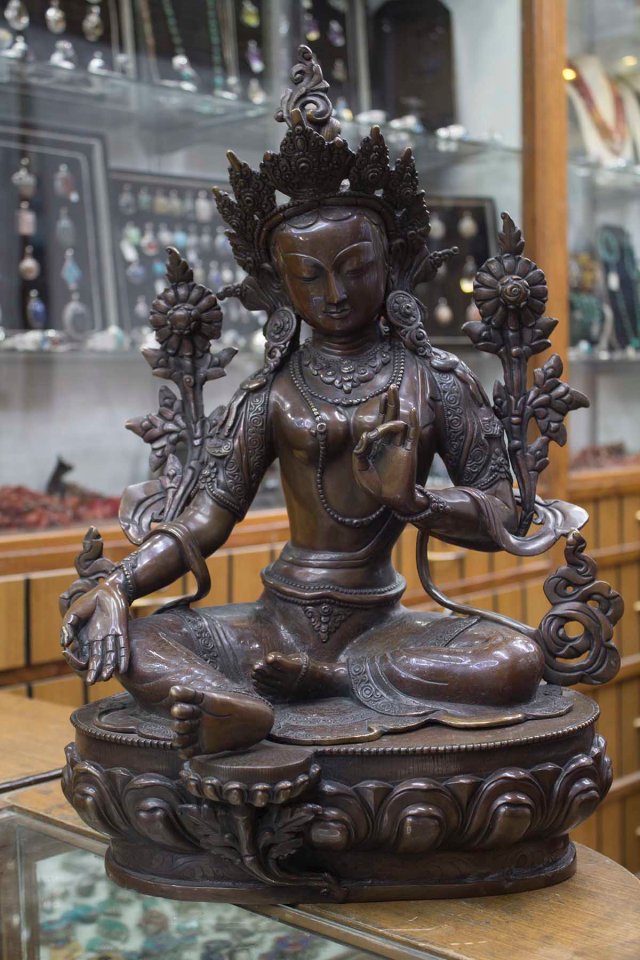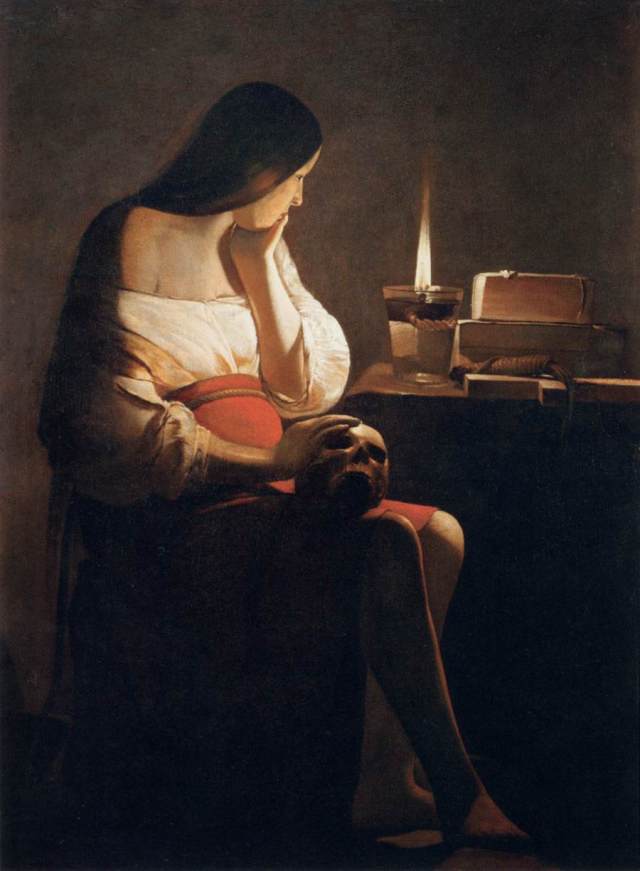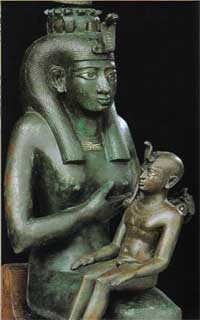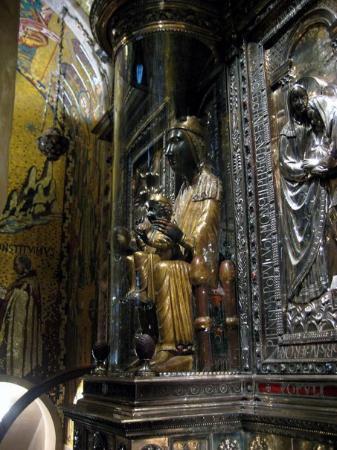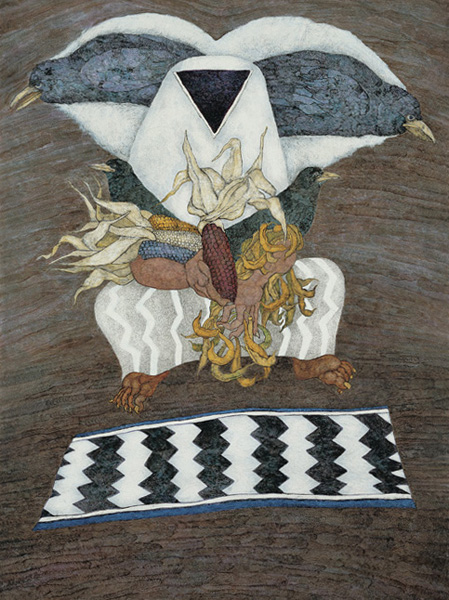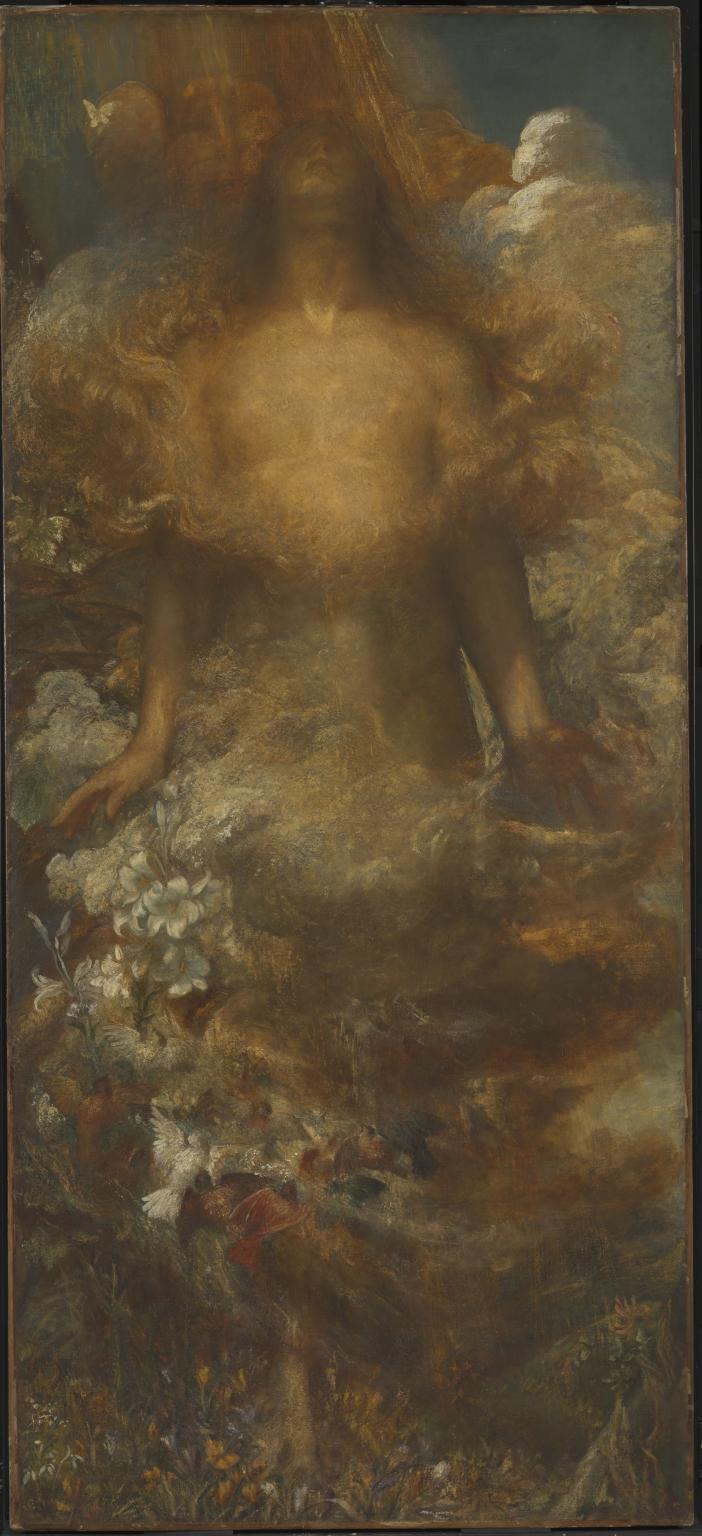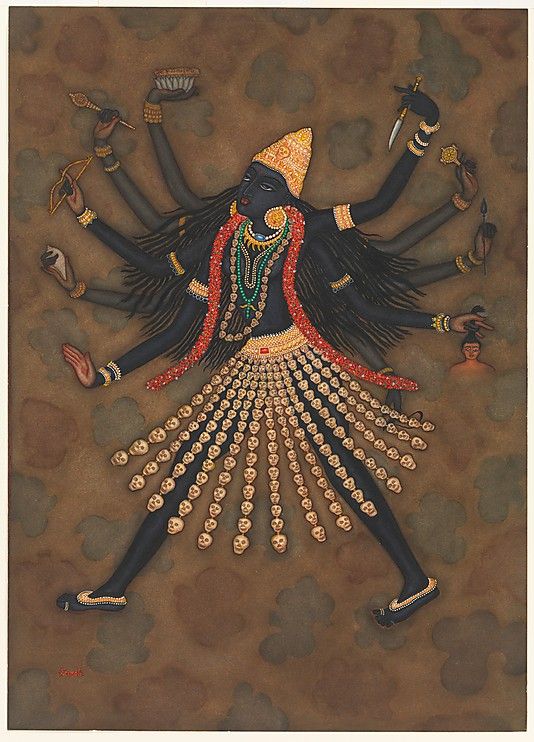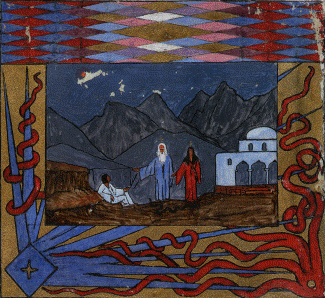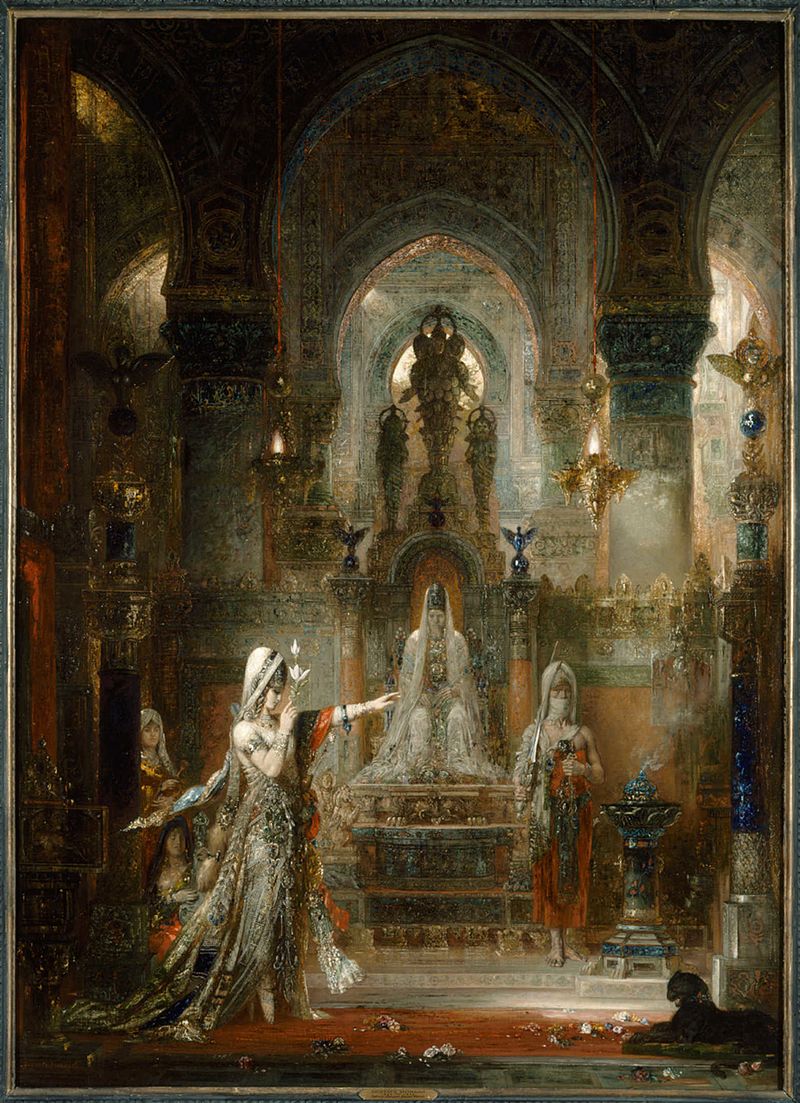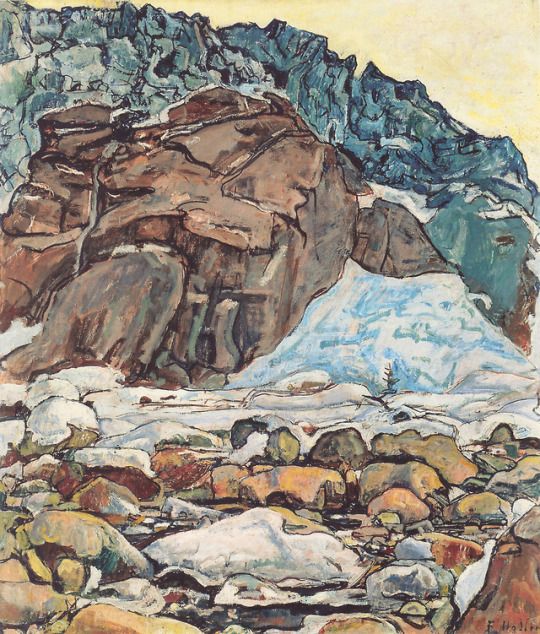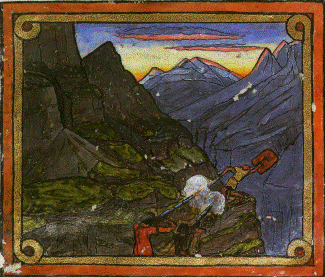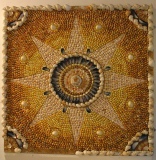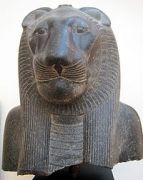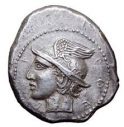
Pytia in the Adyton (via link)
“Drive your cart and your plow over the bones of the dead.”
William Blake, Proverbs of Hell
Is one even allowed to talk about the gods of the underworld? For Rudolf Otto, a twentieth-century theologian, the holy or the numinous manifests in two forms: as mysterium tremendum, which is a mystery that frightens and repels, and as mysterium fascinosum, which we are drawn to despite our fears. The Greek word hieros (sacred) was used to describe votive offerings, the ground on which temples were built as well as ways walked during Mysteries, for example the way to Eleusis, or days on which the gods were present. (1) A person could also be “hieros” if they were initiated in mysteries or worked in temples. Natural phenomena such as mountains, rivers or corn were also believed to possess sacred power. Sacred places were “surrounded by prohibitions,” for example the names of certain gods, especially underworld gods, were not to be uttered; temples contained abatons or adytons – restricted sanctuaries not to be entered by the prophane. (2) Gods were never described as “hieros,” but rather as “hagios;” while the concept of “hieros,” concludes Burkett, was “as it were the shadow cast by divinity.”
Under the entry “Abaddon” in The Women’s Encyclopedia of Myths and Secrets stands:
“The god Apollo was a solar king in heaven during the day, and a Lord of Death in the underworld at night. … Apollo-Python was the serpent deity in the Pit of the Delphic oracle, who inspired the seeress with mystic vapors from his nether world. The Greek word for the Pit was abaton, which the Jews corrupted into Abaddon later a familiar Christian synonym for hell.
Also called a mundus or earth-womb, the abaton was a real pit, standard equipment in a pagan temple. Those who entered it to ‘incubate,’ or to sleep overnight in magical imitation of the incubatory sleep in the womb, were thought to be visited by an “incubus” or spirit who brought prophetic dreams. Novice priests went down into the pit for longer periods of incubation, pantomiming death, burial, and rebirth from the womb of Mother Earth. …
The same burial-and-resurrection ritual is found in the lives of many ancient sages. It was said of the Pythagorean philosopher Thales of Miletus, accounted one of the Seven Wise Men of the ancient world, that he derived his intellectual skills from communion with the Goddess of Wisdom in an abaton.” (3)
According to Peter Kingsley, the goddess of wisdom mentioned above was Persephone, Queen of the Dead. (4)

The Rider-Waite tarot deck – The High Priestess with pomegranates
Funerary practices were the most ancient manifestations of culture and religion. Being human has always meant sharing “the dread of something after death, the undiscovered country from whose bourn no traveler returns,” to quote from Hamlet’s famous monologue. The world is like the cosmic cave, said Neoplatonists, with its southern entrance (into life) and northern exit (into death). This was described in detail by Porphyry in his essay “On the Cave of the Nymphs.” All the invisible, occult powers act in this moist hidden place, where souls descend into generation. Through the gate of Cancer, a water sign, souls “lapse into generation,” while “the spirit becomes moist and more aqueous through the desire of generation.” The gate of Cancer is thus “the gate of men.” The gate of Capricorn, meanwhile, is “the gate of the gods,” and the exit from the cosmic cave. (5)

Adrian Lester as Hamlet in Peter Brook’s production
Some souls have barely entered through the gate of Cancer only to die a premature death. I remember Ram Dass say in one of his talks that these wise souls chose liberation from the samsara. But parents dealing with the death of a child, like Demeter desperately seeking Persephone, cannot find any solace. I was struck by a passage from a non-fiction book that I am currently reading:
“In the shallow sandy soil of northern Europe, some 6,000 years ago, the body of a young woman – dead in childbirth along with her son – is lowered gently into a grave. Next to her is laid the white wing of a swan. Then onto the wing is placed the body of her son, so that the baby is doubly cradled in death – by the swan’s feathers and his mother’s arms. A round mound of earth is raised to mark their burial place: the woman, the child and the white swan’s wing.” (6)
The book is called The Underland: A Deep Time Journey and explores the worlds under our feet, going deep down into the bowels of the earth. Its author Robert MacFarlane writes that
“humanitas in Latin comes first and properly from humando, meaning ‘burying, burial’, itself from humus, meaning ‘earth’ or ‘soil’… In burial, the human body becomes a component of the earth, returned as dust to dust – inhumed, restored to humility, rendered humble.” (7)
On the other hand, James Hillman wrote that “the underworld of Hades and Persephone is so remote from our world that those removed there can have no influence upon the life and doings of men on earth.” (8) He called for drawing a categorical distinction between the chthonic darkness of soul and the earthy blackness of soil, but I am not convinced. In the world of myth, to mention just Osiris and Demeter/Persephone as most prominent examples, and in all funerary rites, these two worlds commingle, nourished by one another.
One of the ancient religious movements which recognized the divinity of the soul and the possibility of symbolic death during life was Orphism. In recent decades researchers have made groundbreaking discoveries regarding this doctrine and the so-called Orphic-Bacchic mysteries, in which Persephone played a crucial role. Jan N. Bremmer refers to Orpheus as a founder of the Mysteries and “father of songs.” (9) Orpheus cast a spell on animals and trees with his music. In a well-known myth, he descended to the Underworld to fetch his wife Eurydice, which explains Orphic devotion to the chthonic wisdom of the Underworld. He died torn to piece by maenads, possessed by divine frenzy.

John Roddam Spencer Stanhope, “Orpheus and Eurydice on the Banks of the Styx”
Orphic theogony differs from Homeric myth quite substantially. As narrated in Greek Religion by Walter Burkert, Zeus transforms into a snake and mates with his daughter Persephone, who gives gave birth to Dionysos. Zeus places the child on the throne as the ruler of the world. “But Hera sends the Titans who distract the child with toys and… he is dragged from the throne, killed, and torn to pieces, then boiled, roasted and eaten. Zeus hereupon hurls his thunderbolt to burn the Titans, and from the rising soot there spring men…”. (10)
The idea that people are partly divine, through coming from Dionysos’ dismembered body, had an enormous bearing on Orphism, which espoused the belief in the immortal soul, metempsychosis (reincarnation) and descent to the underworld (i.e. death) during life to find rebirth and renewal. Barbara Walker compared Orphism to Buddhism since it included the ideas of “escape from the karmic wheel effected by ascetic contemplation, spiritual journeys of the astral-projection type, and elaborate revelations.” An initiated Orphic mystic announced to the world: “”I have sunk beneath the bosom of Persephone, Queen of the Underworld.”(11) Orphics were strongly anti-collectivist and emphasized the doctrine of individual salvation. They were vegetarian and did not practice animal sacrifice.
But what was the symbolic meaning of dismemberment, which seems to permeate the Orphic myth so markedly? The Book of Symbols offers the following insights:
“Belonging to the family of ‘death mysteries,’ dismemberment calls for fertility and resurrection, freeing libido by breaking down defensive structures… The myth of world creation by dismemberment of a primordial being is universal… Each act of dismemberment recapitulates the Creation.
…
Divine scapegoats such as Jesus were symbolically dismembered in order to effect renewal…
Gods personifying the dynamics of dismemberment, such as Osiris, Dionysus and Kali, personify the prospective potentials of this archetypal experience: violence, loss, grief, catastrophe, privation, illness, despair, envy, fury and ecstasy induce altered states that dismember by delinking the personality from its habitual moorings.
…
Dionysus, personifying the dismembering frenzy of ecstasy, possession by unconscious manias and obsessions, opening of boundaries and being ‘torn-up,’ symbolizes many forms of ‘madness’ that dismember as a first step in the fertility magic where dissolution provides the seeds of rebirth.” (12)

Jean Delville, “The Death of Orpheus”
Orphism seemed like a demanding life path, certainly only for the chosen and the elite. A more egalitarian way of guaranteeing oneself a blessed afterlife was taking part in the Eleusinian Mysteries. Unlike in Orphism, those who took part in those did not have to change their lives as a result. I have recently listened to Demetra George’s webinar “The Disappearance of the Daughter – The Eleusinian Mystery Rites of Ceres and Persephone,” which I can recommend wholeheartedly (13). I was also inspired to reread her book Mysteries of the Dark Moon: the Healing Power of the Dark Goddess. There she summarizes her painstaking research into the subject, offering a lot of insights into the significance of these greatest mysteries of the ancient world.

Eduardo Chicharro y Aguera, “Demeter, Kore and Hekate”
In the well-known myth, based on Homeric hymn to Demeter, Persephone is gathering flowers with her female companions when her attention is drawn to a particularly beautiful narcissus. Little did she know that it had been placed there by the earth goddess Rhea, who collaborated with Zeus and Hades. Hades had fallen in love with Persephone, and Zeus agreed to let him marry her without asking Demeter or Persephone. The abduction of Persephone reached the ears of Hekate in her cave and was seen by Helios, the sun god. Demeter fell into utter despair, looking for her daughter everywhere with flaming torches, assisted by Hekate. Finally, they found out the truth from Helios. Demeter fell into an even deeper mourning and despair, letting the earth be bare, with no crops:
“She avoided the company of the Olympians altogether, and traveled instead among the cities of men, in appearance like an old woman, one who has endured many sorrows, who has reached the time when she is through with love and children. Her lush, thick hair was thin and gray, her face wrinkled, her arms and legs like bones. In this state she entered the territory of Keleos, at Eleusis, not far from Athens, and sat down to rest in the shade near the Maiden Well, where the women of the neighborhood came daily to draw water.” (14)
Demeter talked to the young women she met there and soon found a job as a nanny to a high-born baby boy. At night, she would hold him in the ashes fire so that he would grow godlike but once his mother saw her and cried out in despair:
“At this, Demeter, becoming angry, threw the child to the floor, away from the fire, shouting, ‘Stupid, witless humans! You don’t even know what’s good for you! Now he will have to die, like all other mortals. … Know this: I am Demeter, mankind’s greatest joy and aid.’ As she spoke, the goddess changed appearance, until she looked her divine self, taller and more fair, her golden hair flowing over her shoulders. A sweet fragrance wafted from her clothing and a gentle glow pulsed from her skin, filling the whole house with light. With a last command—that the people of Eleusis should build a great temple on the hill to seek her favor—Demeter left the hall.” (15)
Zeus found himself powerless in the face of Demeter’s relentlessness, so he gave in and sent Hermes to retrieve Persephone from the Underworld. But the young goddess was tricked by Hades into eating three grains of pomegranate. Thus, she had to return to the Underworld for a third of the year in winter while she was allowed to spend the fertile seasons with her mother on the earth.
The symbolism of the myth is in part agrarian:
“Demeter represented the fertile earth that nourishes the mature crop, the ripened grain of the harvest in the above world. Persephone stood for the seed germ of the grain, which is buried in the below world during the barren winter months and then emerges as the young vegetation of spring.” (16)
The Goddess of the Grain was also the Goddess of the Dead, since “the earth was both the reviver of their crops and the storehouse of their dead.” (17) Or as Carl Kerenyi, puts it “the being” (Demeter) is sustained by “the non-being” (Persephone). (18)
The Eleusinian Mysteries were the greatest religious festival of the Ancient Greece. The participants had the opportunity to experience the whole range of Demeter’s emotions:
“To enter into the figure of Demeter means to be pursued, to be robbed, raped, to fail to understand, to rage and grieve, but then to get everything back and be born again.” (19)

“The Eleusinian Mysteries”
Both men and women, also slaves, were allowed to take part in the Mysteries and become one with the goddess and follow the Demetrian path. The initiates were the ones who closed their eyes and mouths in an act of surrender to the mystery. In the first part of the mysteries, the participants took part in a procession, during which they immersed themselves in the sea and sacrificed little pigs, which each of them had brought. After a feew days, in the most important part of the event:
“Having sipped her holy drink by the site of Demeter’s well, initiates filed into the omphalos, the cave or navel of the world. This represented the passage to the underworld. As the seekers entered the darkened Telesterion, the Greater Mysteries began. In a mystic drama, the part of the legend dealing with death was imparted. The initiates experienced fear in all its physical symptoms: cold sweats, tremors, and nausea, as the hallucinogenic barley drink coursed through them, and dreadful apparitions howled through the halls.” (20)

Gustave Courbet, “The Grain Sifters”
As a final part of the mysteries, the Hierophant sounded a gong and a happy reunion of mother and daughter took place, together with an announcement of the birth of a child. The Goddess of Death has given birth. The Hierophant showed in utter silence a single ear of corn to the crowd. I love how Kérenyi compared that moment to the famous flower sermon of Buddha, in which his teaching consisted in holding a flower in front of his listeners. Demetra George sums up:
“As the seed died awaiting germination, the initiate died to the old self; and like the sprouting grain, the new soul was reborn into the company of those who had gone before, the epoptai.” (21)
The aim of the mysteries for the mystai (initiates) was to counteract the fear of death. The individual death was demonstrated as something which ensures the continuance of life. The experience was non-communicable and allowed the participants as assimilate themselves into the holy symbols, said Demetra George in her webinar. The symbolism of myth and ritual accompanying the mysteries is extremely rich. Feminist researcher Mara Lynn Keller wrote about the main symbols and ritual objects found on the grounds of the Eleusinian temple, which included images of “sheaves of wheat or barley; the many-seeded pomegranate, …; poppies, symbol of sleep and death; and the snake.” In addition, she offers a fascinating take on the sphinx and a handful of other symbols associated with Demeter and Persephone:
“Another spiritual symbol found in the artwork of Eleusis is the sphinx, in whom the artist combines spiritual, psychic and physical elemental powers, which for preurban peoples were not seen as separate or distinct. The sphinx was a great winged creature with a powerful lion’s body and, most usually, a woman’s head, sometimes crowned by a diadem. Perhaps the sphinx represents the shamanic ability to participate in the bird’s power of flying close to the heavens and seeing great distances, and in the feline’s power to roam the mountains and plains unafraid. In riddles of patriarchy (as alluded to, for example, in Sophocles’ Oedipus Rex), the sphinx-like women who give birth, raise children and attend the dying-knew the beginning, middle and end of life. Oedipus could not unseat the great sphinx until he too had begun to understand these mysteries. The great winged creature is probably a direct descendant of the Neolithic Bird Goddess; … I see the sphinx, like the snake, as a major symbol of the early mother-clan or mother-rite culture. Another animal sacred to Demeter was the pig, whose “prolific character” manifested the abundant fertility and nurturance of nature. In Arcadia, Demeter was also associated with the horse, the peaceful dove and the playful dolphin.” (23)

The goddess holding wheat, poppy bulbs and horned snakes
The pomegranate is a symbol strictly associated with Persephone rather than Demeter. Like Eve’s apple, it symbolizes her transformation from Kore (Maiden) into a conscious, grown woman, Persephone, the queen of the underworld, equal to her husband and equally terrifying. Kérenyi connects her with Medusa, endowed with the consummate wisdom of the snake, which in its profound symbolism encompasses “pure energy, water, treasure, wisdom of the deep, and the feminine principle.” (24) The pomegranate, next to being the symbol of fertility, also symbolizes oneness of the universe and “reconciliation of the multiple and diverse within apparent unity.” The dismembered world is brought to unity by the goddess, just as Isis put together the fragments of Osiris’ body. Persephone, “the Bride of Darkness,” as Tennyson refers to her in his poem, unifies the upper- and underworld, mediating between the two.

Dante Gabriel Rosetti, “Proserpine”
Notes:
(1) Walter Burkert, Greek Religion
(2) Ibid.
(3) Barbara Walker, Women’s Encyclopedia of Myths and Secrets
(4) Peter Kingsley, In the Dark Places of Wisdom
(5) http://www.tertullian.org/fathers/porphyry_cave_of_nymphs_02_translation.htm
(6) Robert MacFarlane, The Underland: A Deep Time Journey
(7) Ibid.
(8) James Hillman, The Dream and the Underworld
(9) Jan N. Bremmer, Initiation into the Mysteries of the Ancient World
(10) Walter Burkert, Greek Religion
(11) Barbara Walker, Women’s Encyclopedia of Myths and Secrets
(12) The Book of Symbols: Reflections on Archetypal Images, ed. by Ami Ronnberg, ARAS
(13) https://www.demetra-george.com/shop/The-Disappearance-of-the-Daughter-The-Eleusinian-Mystery-Rites-of-Ceres-and-Persephone-p150717054
(14) Richard P. Martin, Myths of the Ancient Greeks
(15) Ibid.
(16) Demetra George, Mysteries of the Dark Moon: the Healing Power of the Dark Goddess
(17) Ibid.
(18) Carl Kerényi, Kore, in: Introduction to a Science of Mythology by C.G. Jung and C. Kerényi
(19) Ibid.
(20) Ibid.
(21) Demetra George, Mysteries of the Dark Moon: the Healing Power of the Dark Goddess
(22) Mara Lynn Keller, “The Eleusinian Mysteries of Demeter and Persephone,” Journal of Feminist Studies in Religion, Vol. 4, No. 1
(23) Ibid.
(24) Juan Eduardo Cirlot, Dictionary of Symbols




